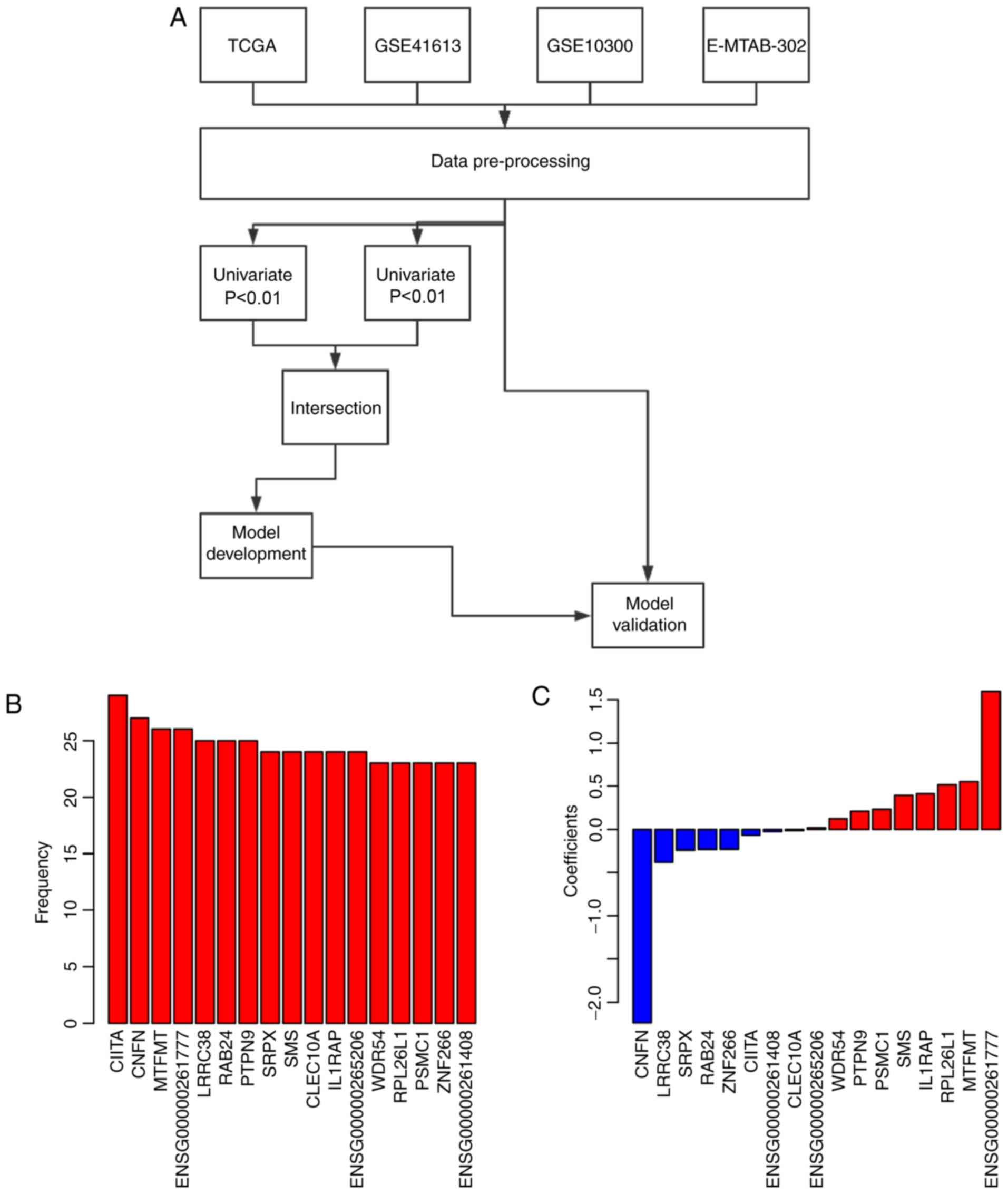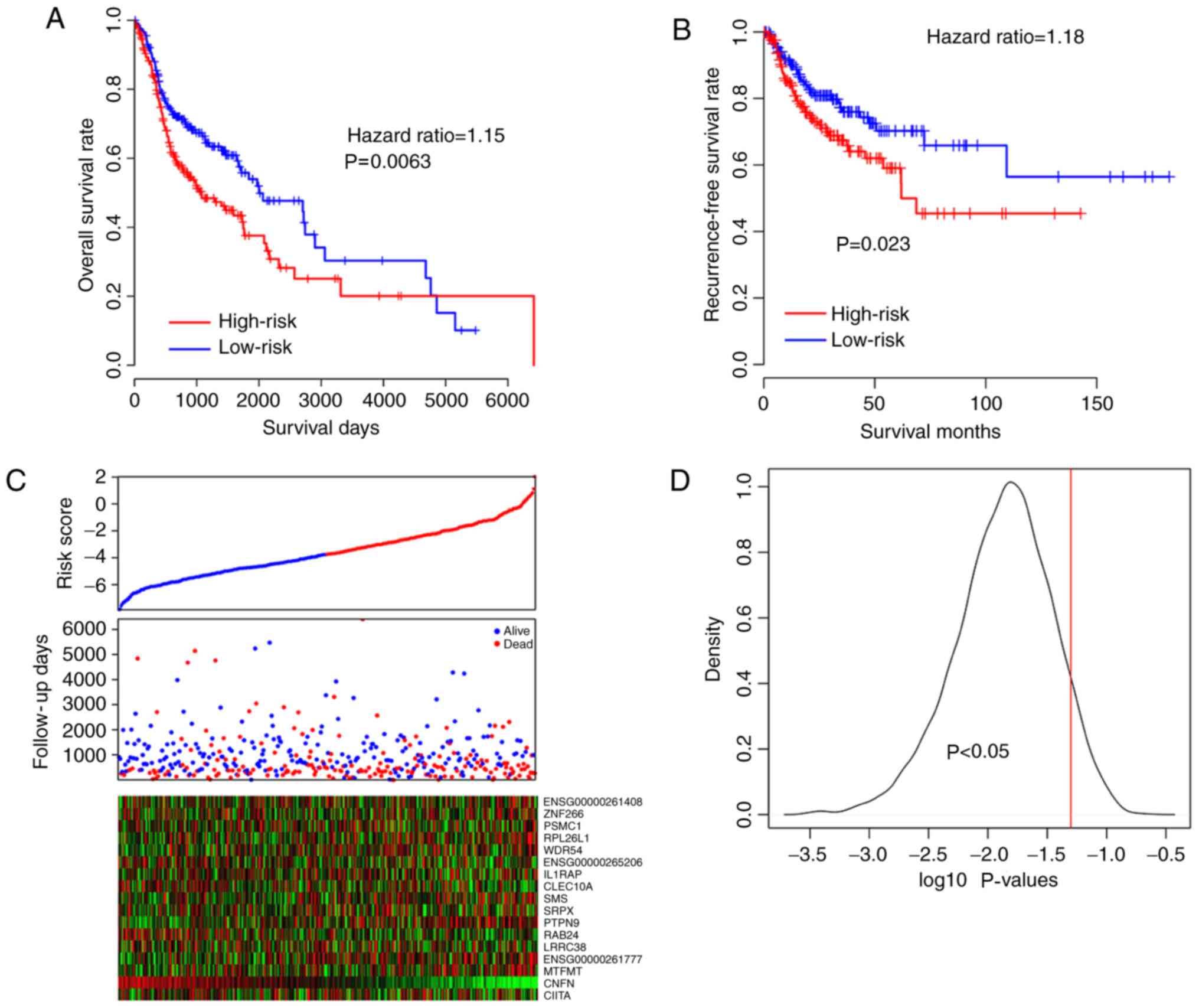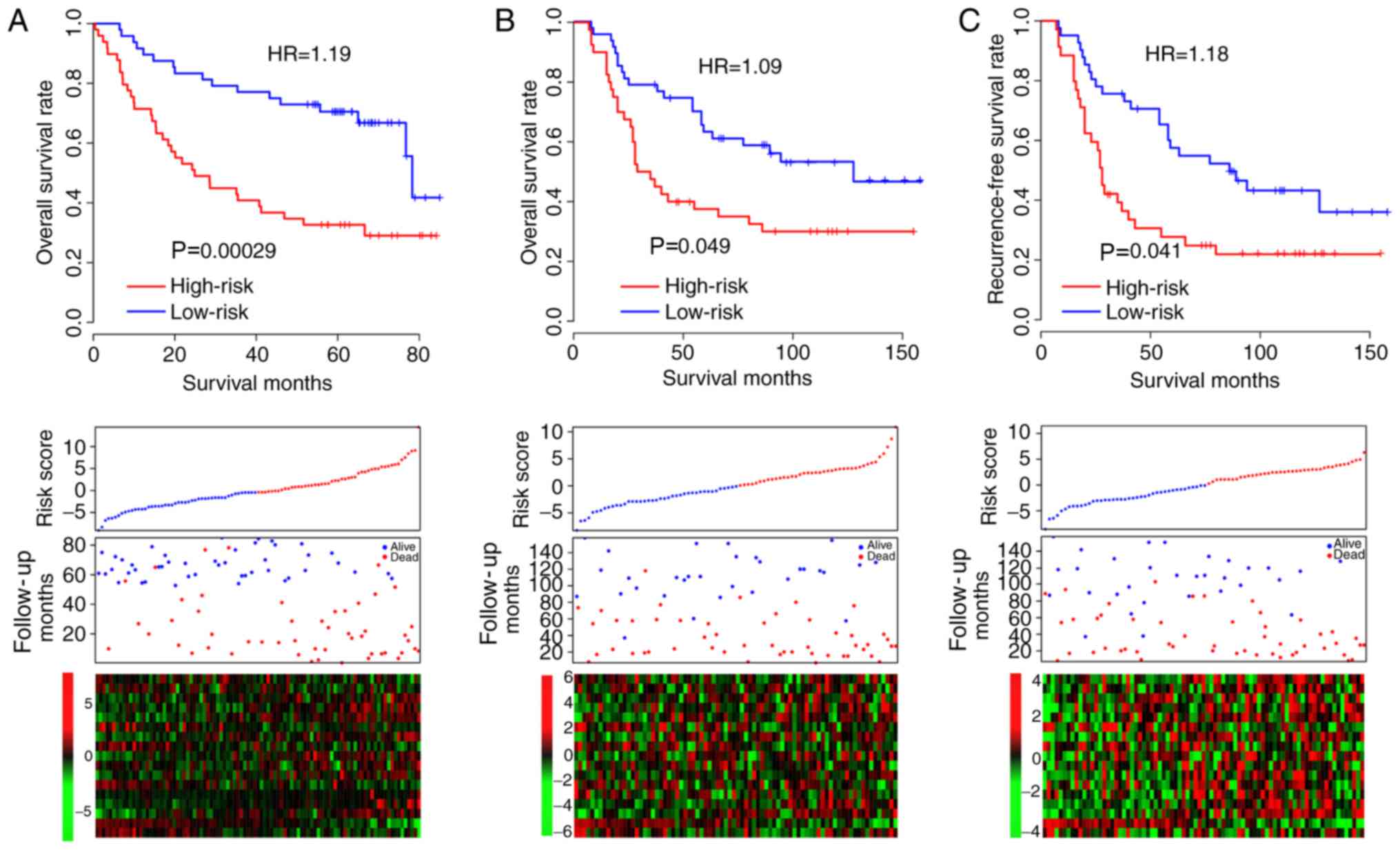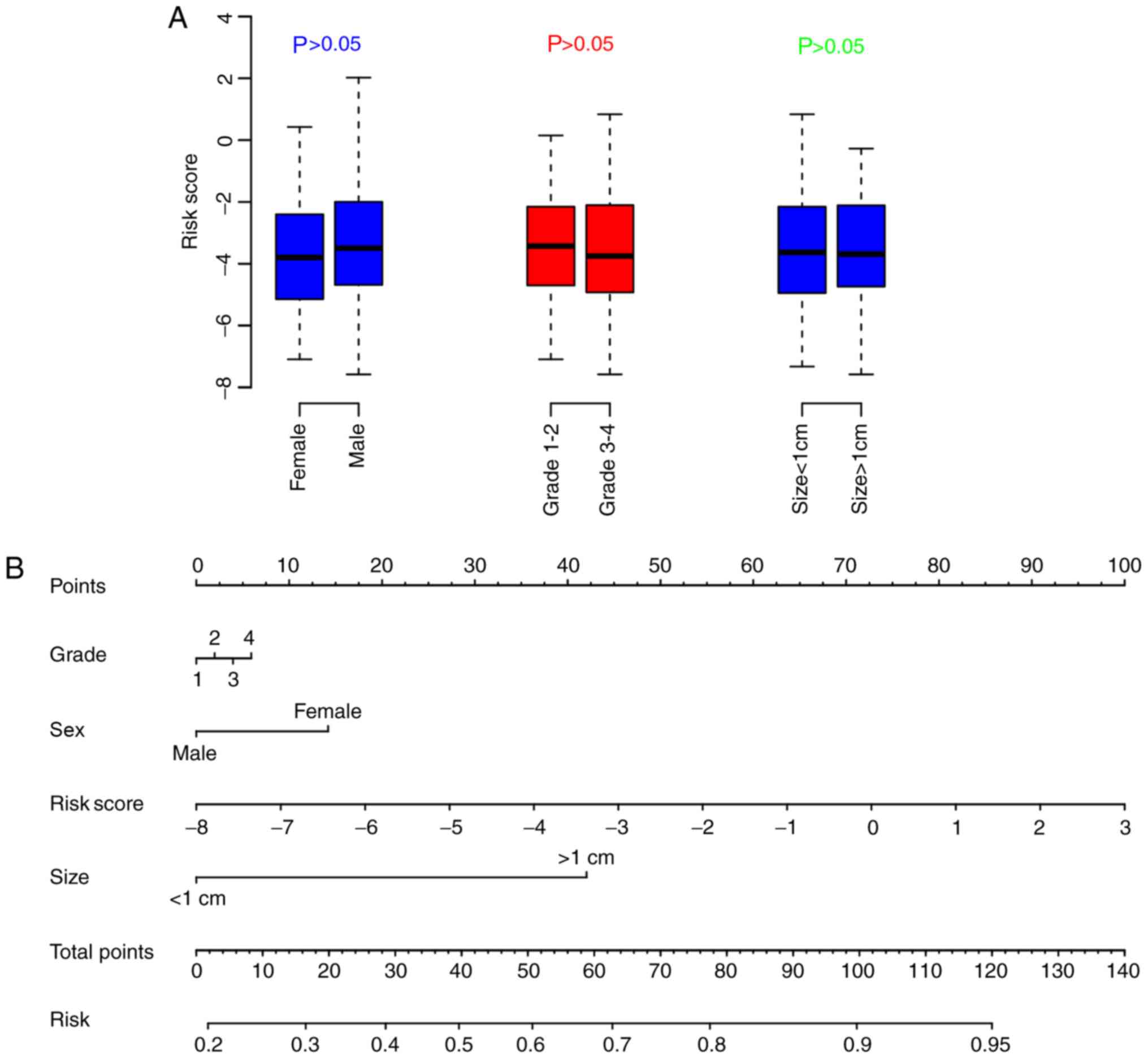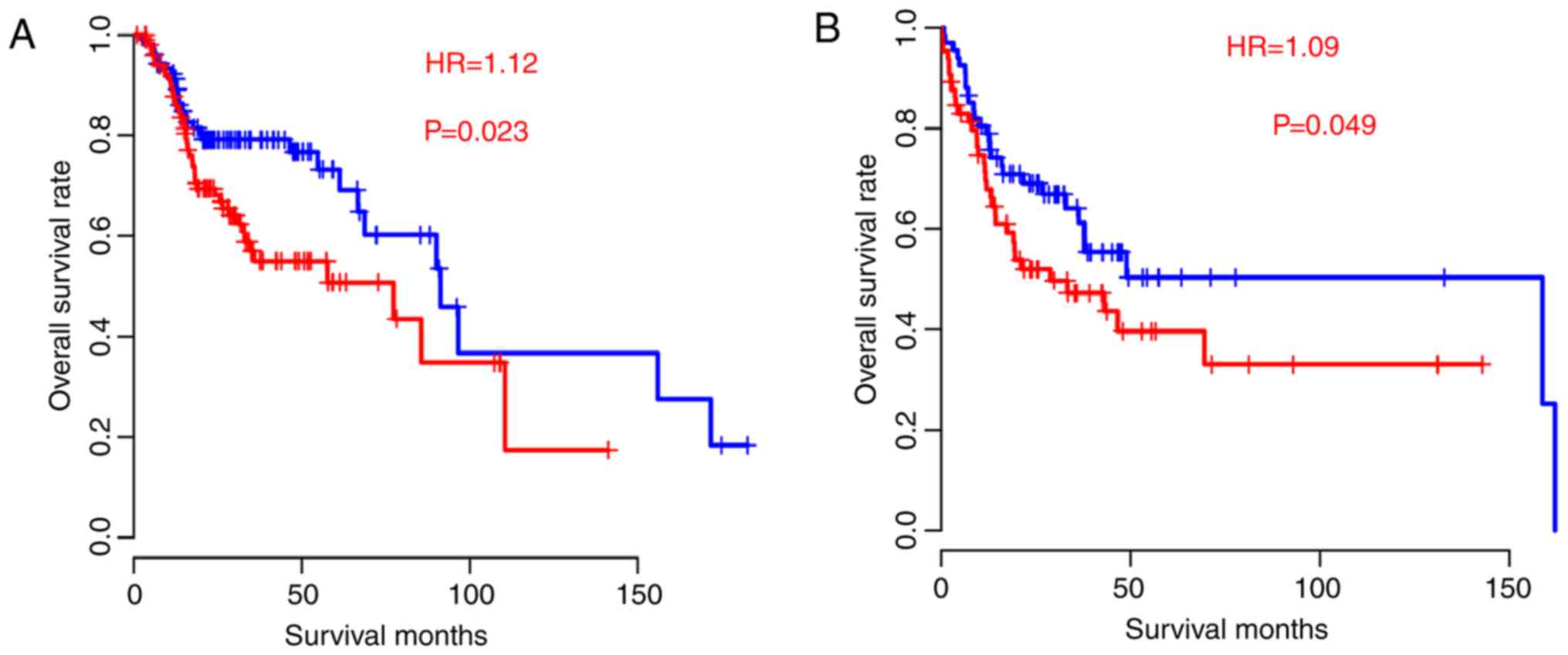|
1
|
Parkin DM, Bray F, Ferlay J and Pisani P:
Global cancer statistics, 2002. CA Cancer J Clin. 55:74–108. 2005.
View Article : Google Scholar : PubMed/NCBI
|
|
2
|
Chen W, Zheng R, Baade PD, Zhang S, Zeng
H, Bray F, Jemal A, Yu XQ and He J: Cancer statistics in China,
2015. CA Cancer J Clin. 66:115–132. 2016. View Article : Google Scholar : PubMed/NCBI
|
|
3
|
Katiyar SK: Emerging phytochemicals for
the prevention and treatment of head and neck cancer. Molecules.
21(pii): E16102016. View Article : Google Scholar : PubMed/NCBI
|
|
4
|
de Andrade DA and Machiels JP: Treatment
options for patients with recurrent or metastatic squamous cell
carcinoma of the head and neck, who progress after platinum-based
chemotherapy. Curr Opin Oncol. 24:211–217. 2012. View Article : Google Scholar : PubMed/NCBI
|
|
5
|
Pfister DG, Ang KK, Brizel DM, Burtness
BA, Cmelak AJ, Colevas AD, Dunphy F, Eisele DW, Gilbert J, Gillison
ML, et al: Head and neck cancers. J Natl Compr Canc Netw.
9:596–650. 2011. View Article : Google Scholar : PubMed/NCBI
|
|
6
|
Song W and Zou SB: Prognostic role of
lncRNA HOTAIR in esophageal squamous cell carcinoma. Clin Chim
Acta. 463:169–173. 2016. View Article : Google Scholar : PubMed/NCBI
|
|
7
|
Chen Z, He A, Wang D, Liu Y and Huang W:
Long noncoding RNA HOTTIP as a novel predictor of lymph node
metastasis and survival in human cancer: A systematic review and
meta-analysis. Oncotarget. 8:14126–14132. 2017.PubMed/NCBI
|
|
8
|
He A, Hu R, Chen Z, Liao X, Li J, Wang D,
Lv Z, Liu Y, Wang F and Mei H: Role of long noncoding RNA UCA1 as a
common molecular marker for lymph node metastasis and prognosis in
various cancers: A meta-analysis. Oncotarget. 8:1937–1943.
2017.PubMed/NCBI
|
|
9
|
Chen J, Miao Z, Xue B, Shan Y, Weng G and
Shen B: Long non-coding RNAs in urologic malignancies: Functional
roles and clinical translation. J Cancer. 7:1842–1855. 2016.
View Article : Google Scholar : PubMed/NCBI
|
|
10
|
Nohata N, Abba MC and Gutkind JS:
Unraveling the oral cancer lncRNAome: Identification of novel
lncRNAs associated with malignant progression and HPV infection.
Oral Oncol. 59:58–66. 2016. View Article : Google Scholar : PubMed/NCBI
|
|
11
|
Zou AE, Ku J, Honda TK, Yu V, Kuo SZ,
Zheng H, Xuan Y, Saad MA, Hinton A, Brumund KT, et al:
Transcriptome sequencing uncovers novel long noncoding and small
nucleolar RNAs dysregulated in head and neck squamous cell
carcinoma. RNA. 21:1122–1134. 2015. View Article : Google Scholar : PubMed/NCBI
|
|
12
|
Denaro N, Merlano MC, Russi EG and Lo
Nigro C: Non coding RNAs in head and neck squamous cell carcinoma
(HNSCC): A clinical perspective. Anticancer Res. 34:6887–6896.
2014.PubMed/NCBI
|
|
13
|
Xu CZ, Jiang C, Wu Q, Liu L, Yan X and Shi
R: A feed-forward regulatory loop between HuR and the long
noncoding RNA HOTAIR promotes head and neck squamous cell carcinoma
progression and metastasis. Cell Physiol Biochem. 40:1039–1051.
2016. View Article : Google Scholar : PubMed/NCBI
|
|
14
|
Zou AE, Zheng H, Saad MA, Rahimy M, Ku J,
Kuo SZ, Honda TK, Wang-Rodriguez J, Xuan Y, Korrapati A, et al: The
non-coding landscape of head and neck squamous cell carcinoma.
Oncotarget. 7:51211–51222. 2016. View Article : Google Scholar : PubMed/NCBI
|
|
15
|
Tian X and Xu G: Clinical value of lncRNA
MALAT1 as a prognostic marker in human cancer: Systematic review
and meta-analysis. BMJ Open. 5:e0086532015. View Article : Google Scholar : PubMed/NCBI
|
|
16
|
Jadaliha M, Zong X, Malakar P, Ray T,
Singh DK, Freier SM, Jensen T, Prasanth SG, Karni R, Ray PS and
Prasanth KV: Functional and prognostic significance of long
non-coding RNA MALAT1 as a metastasis driver in ER negative lymph
node negative breast cancer. Oncotarget. 7:40418–40436. 2016.
View Article : Google Scholar : PubMed/NCBI
|
|
17
|
Huang C, Yu Z, Yang H and Lin Y: Increased
MALAT1 expression predicts poor prognosis in esophageal cancer
patients. Biomed Pharmacother. 83:8–13. 2016. View Article : Google Scholar : PubMed/NCBI
|
|
18
|
Kong L, Zhou X, Wu Y, Wang Y, Chen L, Li
P, Liu S, Sun S, Ren Y, Mei M, et al: Targeting HOTAIR induces
mitochondria related apoptosis and inhibits tumor growth in head
and neck squamous cell carcinoma in vitro and in vivo. Curr Mol
Med. 15:952–960. 2015. View Article : Google Scholar : PubMed/NCBI
|
|
19
|
Fayda M, Isin M, Tambas M, Guveli M, Meral
R, Altun M, Sahin D, Ozkan G, Sanli Y, Isin H, et al: Do
circulating long non-coding RNAs (lncRNAs) (LincRNA-p21, GAS 5,
HOTAIR) predict the treatment response in patients with head and
neck cancer treated with chemoradiotherapy? Tumour Biol.
37:3969–3978. 2016. View Article : Google Scholar : PubMed/NCBI
|
|
20
|
Chen H, Xin Y, Zhou L, Huang JM, Tao L,
Cheng L and Tian J: Cisplatin and paclitaxel target significant
long noncoding RNAs in laryngeal squamous cell carcinoma. Med
Oncol. 31:2462014. View Article : Google Scholar : PubMed/NCBI
|
|
21
|
Lohavanichbutr P, Méndez E, Holsinger FC,
Rue TC, Zhang Y, Houck J, Upton MP, Futran N, Schwartz SM, Wang P
and Chen C: A 13-gene signature prognostic of HPV-negative OSCC:
Discovery and external validation. Clin Cancer Res. 19:1197–1203.
2013. View Article : Google Scholar : PubMed/NCBI
|
|
22
|
Cohen EE, Zhu H, Lingen MW, Martin LE, Kuo
WL, Choi EA, Kocherginsky M, Parker JS, Chung CH and Rosner MR: A
feed-forward loop involving protein kinase Calpha and microRNAs
regulates tumor cell cycle. Cancer Res. 69:65–74. 2009. View Article : Google Scholar : PubMed/NCBI
|
|
23
|
Tang Y, Xiang W, Terry L, Kretzschmar HA
and Windl O: Transcriptional analysis implicates endoplasmic
reticulum stress in bovine spongiform encephalopathy. PLoS One.
5:e142072010. View Article : Google Scholar : PubMed/NCBI
|
|
24
|
Zhang ZL, Zhao LJ, Chai L, Zhou SH, Wang
F, Wei Y, Xu YP and Zhao P: Seven lncRNA-mRNA based risk score
predicts the survival of head and neck squamous cell carcinoma. Sci
Rep. 7:3092017. View Article : Google Scholar : PubMed/NCBI
|
|
25
|
Robin X, Turck N, Hainard A, Tiberti N,
Lisacek F, Sanchez JC and Müller M: pROC: An open-source package
for R and S+ to analyze and compare ROC curves. BMC Bioinformatics.
12:772011. View Article : Google Scholar : PubMed/NCBI
|
|
26
|
Liu Q, Diao R, Feng G, Mu X and Li A: Risk
score based on three mRNA expression predicts the survival of
bladder cancer. Oncotarget. 8:61583–61591. 2017.PubMed/NCBI
|
|
27
|
Sawabe M, Ito H, Oze I, Hosono S, Kawakita
D, Tanaka H, Hasegawa Y, Murakami S and Matsuo K: Heterogeneous
impact of alcohol consumption according to treatment method on
survival in head and neck cancer: A prospective study. Cancer Sci.
108:91–100. 2017. View Article : Google Scholar : PubMed/NCBI
|
|
28
|
Bou Samra E, Klein B, Commes T and Moreaux
J: Development of gene expression-based risk score in
cytogenetically normal acute myeloid leukemia patients. Oncotarget.
3:824–832. 2012.PubMed/NCBI
|
|
29
|
Kim SK, Kim SY, Kim JH, Roh SA, Cho DH,
Kim YS and Kim JC: A nineteen gene-based risk score classifier
predicts prognosis of colorectal cancer patients. Mol Oncol.
8:1653–1666. 2014. View Article : Google Scholar : PubMed/NCBI
|
|
30
|
Bou Samra E, Klein B, Commes T and Moreaux
J: Identification of a 20-gene expression-based risk score as a
predictor of clinical outcome in chronic lymphocytic leukemia
patients. Biomed Res Int. 2014:4231742014. View Article : Google Scholar : PubMed/NCBI
|
|
31
|
Massari F, Bria E, Ciccarese C, Munari E,
Modena A, Zambonin V, Sperduti I, Artibani W, Cheng L, Martignoni
G, et al: Prognostic value of beta-tubulin-3 and c-Myc in muscle
invasive urothelial carcinoma of the bladder. PLoS One.
10:e01279082015. View Article : Google Scholar : PubMed/NCBI
|
|
32
|
Schmitt AM and Chang HY: Long noncoding
RNAs in cancer pathways. Cancer Cell. 29:452–463. 2016. View Article : Google Scholar : PubMed/NCBI
|
|
33
|
Weng M, Wu D, Yang C, Peng H, Wang G, Wang
T and Li X: Noncoding RNAs in the development, diagnosis, and
prognosis of colorectal cancer. Transl Res. 181:108–120. 2017.
View Article : Google Scholar : PubMed/NCBI
|















